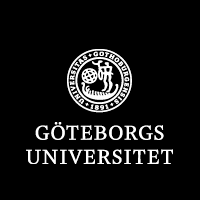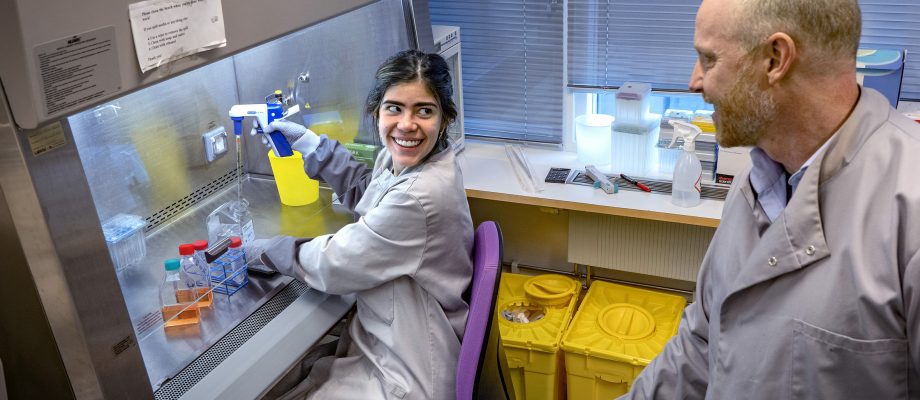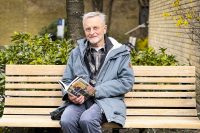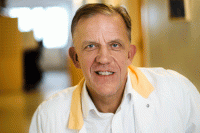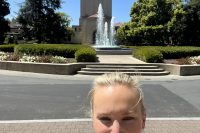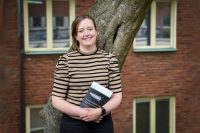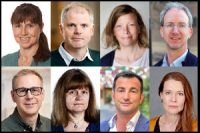GRANTS. A bone-anchored prosthesis represents a completely different quality of life than a conventional prosthesis for those who have had to undergo amputation of a leg, for example. The number of patients who can receive an implant is limited now by the patient’s need to have good healing ability. Professor Anders Palmquist studies what happens in the juncture between the implant’s surface and the patients’ bone tissue. The purpose is to enable significantly more amputees to receive an implant. An advanced microscope, purchased with funds from the IngaBritt and Arne Lundberg Research Foundation, will contribute new knowledge at the nanometer level about how the bone heals and develops around an implant.
Conventional prostheses often cause problems for their users. The fit is seldom optimal, they can be uncomfortable while sitting, and the skin becomes sweaty and irritated where the socket joins the body. A bone-anchored prosthesis is attached with a titanium screw implanted in the patient’s skeleton. Studies show that patients with bone-anchored prostheses use their prostheses more and have increased mobility, fewer problems, and a better quality of life.
Diabetes accounts for most amputations performed in Sweden. Diabetic patients currently cannot receive an implant prosthesis because diabetes also impairs their ability to heal. The same applies to patients with osteoporosis and cancer patients treated with radiation. As a result, we need more knowledge about these patients’ bone tissue and its ability to heal and grow.
Bone cells that communicate
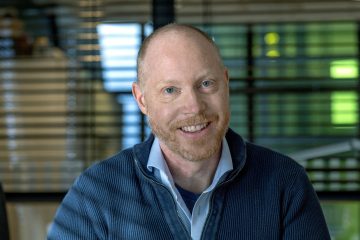
Anders Palmquist, a professor in the Department of Biomaterials at Sahlgrenska Academy at the University of Gothenburg, focuses his research on how bone tissue forms around an implant. The research aims to enable more people to be treated with bone-anchored prostheses. He has developed new methods for analyzing the chemistry and structure of bone tissue that make it possible to see how diseases, lifestyles, and medicines affect the quality and growth of bone. They involve astonishing close-ups under a microscope. At the nanometer level, bone tissue looks like a mat made up of several layers of rope. This, in turn, consists of many small threads, which are proteins with minerals surrounding them. They make the bone strong.
“By analyzing the structure of the bone, we can see how it has formed. We look at the osteocytes, the cells in the bone tissue that sense the load, and their communication threads, which are 200–300 nanometers in diameter. They have direct contact with the implant surface and signal the body’s system to activate other cell types needed for bone formation and remodeling.”
The effects of the load on bone growth
Thanks to a grant of SEK 3 million from the Lundberg Research Foundation, Anders Palmquist can continue developing the analyses. The money finances the purchase of an AFM microscope*. This microscope is usually used to measure the topography of a surface, such as that of a tissue sample. But Palmquist sees other possibilities for it.
“The microscope has an extremely thin tip that measures the top of the surface. We want to press it into the material and measure the forces, the rigidity, in the tissue. Then we can connect the bone’s structure and chemical composition with mechanical properties and understand much more about how the bone is affected by the implant, by different illnesses, and by the load it bears. When someone walks or stands on a bone-anchored prosthesis, the load goes up into the skeleton. The bone tissue of the skeleton responds to the load and changes constantly to create maximum strength based on the load to which it is subjected. We need more knowledge about that process.”
New possibilities with simulation
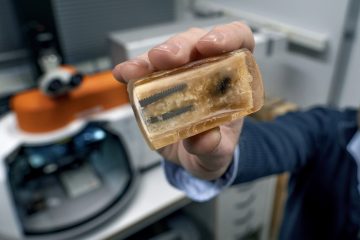
In collaboration with research colleagues in Israel, Anders Palmquist is also building up a knowledge bank of all the data that emerges. The knowledge bank will serve as a platform for simulating bone growth around implants.
“With simulation, we can continue to build new knowledge and at the same time reduce experimental research. For example, we can assume that bone is formed at a certain speed and see how the speed affects the mechanical development of the bone. Then we can add additional parameters and see what effect they have on the bone tissue.”
Another important area to study is how the surface of the implants interacts with biology. Through doctoral student Paula Giraldo Osorno, Palmquist’s research team is participating in a European Union project that studies how the surface of implants can be changed so that the cells in the bone tissue thrive and grow well and bacteria do not thrive.
“Infections are a big problem, and we do not want to have to use antibiotics,” Palmquist explains.
More individual adaptation
Anders Palmquist’s research will do more than enable more people to receive implants. The implants will also be improved through individual adaptation.
“Simulations allow us to develop methods for specially adapting materials and surface properties in the implants to each patient’s bone type to promote local healing. In addition, the design of the implants can be modified more to suit the individual patient.”
The new microscope has not been installed yet, but the procurement process has begun.
“Different AFM equipment is good at different things. We want a microscope that can be used by many colleagues here in the department, but it will primarily be very well-suited for our needs.”
*AFM: Atomic Force Microscope
BY: LUNDBERG RESEARCH FOUNDATION
PHOTO: MAGNUS GOTANDER
